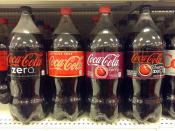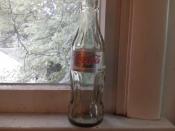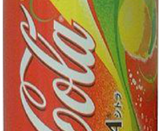History of Coca-Cola
In 1886, in Atlanta, Georgio, a pharmacist called Dr. John S Pemberton invented the soft drink, Coco-Cola, and is often referred as Coke. The brand name as well as designing the trademark, was suggested by John Pemberton's partner and bookkeeper, Frank Robinson.
Two years after creating the Coca-Cola formula, Dr Pemberton sold shares of his business to miscellaneous parties. Most of the interests were sold to Atlanta businessman, Asa G. Candler, and under his leadership, distribution of Coca Cola expanded to soda fountains, besides Atlanta. In 1894, Coca-Cola's growing demand prompt Joseph Biedenharm into setting up bottling machinery near to his Mississippi soda fountain, in order to make the beverage portable, by placing them in bottles. Five years later, a large scale of bottling was made, and in 1899, three enterprising businessmen in Chattanooga, Tennessee purchased the bottling rights from Asa Candler for $1. Benjamin Thomas, Joseph Whitehead and John Lupton developed what became the Coca-Cola worldwide bottling system.
Challenges during the early days
One of the biggest challenges for early bottling, were imitations of the soft drink by competitors and lack of packaging consistency among the 1,ooo bottling plants at the time. The bottlers took note of the problem, and in 1916, they came into an agreement of approving the unique contour bottle. The new distinctive Coca-Cola bottle could be recognized in the dark and it effectively set the brand apart from competition. The trademark of the contoured Coca-Cola bottle was in 1977.
Early days of marketing efforts
The first marketing attempt in Coca-Cola history were done through coupons promoting free samples of the beverage, which considered to be an innovative tactic back in 1887. Besides couponing, newspaper advertising and the distribution of promotional items bearing the Coca-Cola script to participating pharmacies.
http://www.worldofcoca-cola.com/coca-cola-facts/coca-cola-history/
Current Positioning
Coca-Cola Company is recognized worldwide, but it is operated locally. For instance, the taste of the soft drink is catered for consumers according to their local taste and culture, as well as the packaging of the bottling and distribution.
Identify how this brand compares with its competitors
Coca-Cola and Pepsi are direct competitors with one another.
Both Coca-Cola and Pepsi have the same core benefit(need or want) to their consumers
To quench thirst
Soft drink/Carbonated (non-alcoholic drink)
Coca-Cola and Pepsi - recognized worldwide. Each country has its own language printed on the packaging of the can/bottle.
Both Pepsi and Coca-Cola may differ in flavours but both the brands deliver the same needs and wants to their consumers/target market.
For instance:
The products caters for consumers of all ages(except infants/toddlers-common sense), gender and ethnicity
The product also caters for consumers who are health conscious, such as Coca-Cola Zero(sports drink)
Both the products can be obtained worldwide. Sold in convenient stores, restaurants, vending machines
Sold at almost the same price, depending on the growing rate of the products and the country.
Coke
Coca-Cola
Coca-Cola Cherry
Coke Vanilla
Coke Zero
Diet Coke
http://www.coca-cola.co.uk/brands/diet-coke.html
Pepsi
Pepsi MAX
Caffeine Free Diet Pepsi
Diet Pepsi
Pepsi Next
http://www.pepsicobeveragefacts.com/Home/Product?formula=35005*26*01-01&form=RTD&size=7.5
Targeted audiences for marketing communication campaign
Television
Coca-cola uses marketing communication to advertise and communicate with consumers in order to build and maintain customer relationship.
Television is an essential communication tool for advertisers. Coca-Cola uses the television to advertise their brand through commercials, in order to reach a wide range of consumers. Commercials/advertisements on television is more effective because everyone of all ages, gender, interest, income level, and ethnicity, watches the television. Advertisements/commercials on television, has the ability to capture the attention of the consumers, through the visual presentation, soundtrack/music, slogan, dialogue, colours and the creativity of the commercials. It also evoke an emotional response and interest of the targeted audience/consumers.
Outdoor Advertising(billboards, on buses, taxis)
Advertising on billboards is also another effective way of attracting the attention of the audiences/consumers. Outdoor signs are normally the first thing a potential consumer/customer sees. Billboards are large signage with visual presentation, slogans and sufficient information to let consumers/customers to know what is being sold in the advertisement


